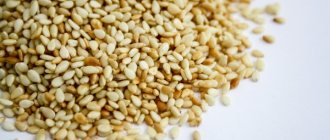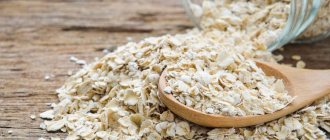About growth hormone, weight loss and night eating
Somatotropic hormone (growth hormone) is a magical remedy that is produced by our pituitary gland and is regulated by the hypothalamus - level and production, and serves to launch protein synthesis processes for skin renewal, muscle growth, strengthening bones, strengthening internal organs (for example, liver, thyroid gland, thymus gland, gonads, adrenal glands, etc.).
In childhood, we grow thanks to this hormone, and in adulthood, when body growth stops, it helps restore and renew the body, causing the synthesis of new cells and an increase in their mass.
So, somatotropic hormone is a hormone that regulates the synthesis of new cells, increasing their number, their size, replacing damaged and spent cells (we remember that every 180 days our body is almost completely renewed). In order for these processes to go well and efficiently, this extraordinary hormone produces energy for itself, causing the mobilization of fat reserves and their combustion, and also stimulates the process of glucose formation from non-carbohydrate sources (glyconeogenesis).
Good news! Sufficient activity of somatotropic hormone allows you to lose weight and become younger!
What happens if we decide to add energy to the process through some fast carbohydrates (sweets, baked goods, etc.)? The relationship between growth hormone and carbohydrate load is as follows: a lot of glucose = a lot of insulin → the production and activity of growth hormone decreases sharply. Low glucose = low insulin → somatotropic hormone activity increases.
When is growth hormone produced? Firstly, the largest amount of it (up to 80%) is produced at night (remember, children grow at night!).
A person goes to bed on time, somatotropic hormone begins to be produced at night, and it is produced in sufficient quantities and for a long time, providing all the necessary processes. The second source of stimulation of growth hormone production is food, that is, peak increases in growth hormone production during meals. If for some reason a person does not sleep at night, then he thereby prevents the pituitary gland from secreting growth hormone during night sleep. And the body needs to maintain the level of somatotropic hormone, otherwise renewal and restoration processes will not occur. And, in order to make up for this deficiency, the body comes out of the situation by stimulating the appetite, as if saying - “since you’re not letting me sleep, then at least feed me!” And “night grazing” begins: a person wanted to eat at night, ate, the level of growth hormone peaked, and after some time fell, and again an acute desire to eat arises. And so on. Here is one explanation for the nightly “feasts”. Therefore, if you want your fat to burn at night, if you want the somatotropic hormone to provide all the necessary functions, you need to sleep at night! If you don’t sleep, your body will still stimulate the production of growth hormone, but only through eating at night, and this leads to weight gain.
The role of growth hormone in human life
Growth hormone (somatotropin) is a special hormone that is produced in the anterior lobe of the pituitary gland. It is responsible for the growth and development of the growth zones of bones and tissues in adolescence.
It is most actively produced from 20 to 25 years of age, since a person’s bones are still growing. At the age of 30, its production stops at the same level, and by the age of 40-45, the level of somatotropin rapidly decreases. This happens because bone growth stops, and the body no longer has anywhere to spend as much energy as before. It is during the period from 30 to 45 years that a person most often gains excess weight.
But if you organize your life correctly, the level of growth hubbub can always be high. This requires adequate sleep, exercise, “positive” stress and proper nutrition.
©deathtostock
How does it affect weight loss?
Why is it believed that somatotropin has a positive effect on weight loss? The fact is that this hormone increases the body's need for fatty acids. This means that active breakdown of existing fat cells and their absorption by organ cells will be necessary.
Growth hormone is able to simultaneously stop or slow down the process of formation of fat deposits and accelerate the breakdown of existing ones. At the same time, the amount of protein in the cells increases, which leads to an increase in muscle mass.
Doctors emphasize that if a person is already overweight, then taking drugs with growth hormone alone will not correct the situation. In any case, you will need to exercise physical activity and adjust your diet.
How does it affect weight loss?
Growth hormone is administered subcutaneously and it is advisable not to inject in the same place. The dosage regimen involves long-term therapy - it will not be possible to get rid of fat deposits in a short period of time; you will need to use the drug for 2-6 months. During the entire course, you can change drugs (it’s just important that they are not counterfeit); breaks in injections are not allowed.
| A week | Dosage |
| First month (4 weeks) | 4 units per day, divided into two doses of 2 IU each |
| 5 and 6 weeks | 5 units per day, also divided into 2 doses in equal quantities |
| 7 and 8 weeks | 6 IU per day, two injections at a dosage of 3 IU each |
| Week 9 and 10 | per day you need to administer 8 IU twice |
Then the dosage is reduced in the reverse order, which is necessary to prevent a sharp drop in the amount of somatotropin in the body. If you follow exactly this regimen, then restorative therapy will not be needed, and the drug will be discontinued in a gentle and safe way for the body.
The same scheme works for women, but the daily dosage is reduced by 2 times. That is, for the first 4 weeks it is enough to administer 2 IU per day, then 2.5 IU and so on. The daily dosage must be divided into two injections.
How to take somatotropin for drying?
Before starting to use the hormone, you should read the recommendations of trainers and doctors:
- If you use GH regularly, you need to carefully monitor your blood sugar levels. This substance helps suppress the production of insulin, increasing sugar levels during the breakdown of fats. In this case, along with the drug, it is additionally recommended to inject injections with pure insulin.
- Frequent use of somatotropin can interfere with the natural functioning of the pancreas and endocrine glands, so you should check the body for tumor markers and regularly take tests for growth hormone analysis.
- To support the thyroid gland, which will work at its maximum during the course, you need to additionally take thyroid hormones.
The basic scheme of a course of somatotropin for drying:
- For fat burning, growth hormone is used for 2-3 months. After this, the course should be stopped. The break must be at least 3 weeks.
- In the first 7 days, the dosage of GH should not exceed 4-5 units of the substance. It is advisable to monitor the development of side effects after each injection. If they are absent, the dosage may be increased.
- From the second week, the dose is also gradually increased to 10 units. It is recommended to split the dose. Give the first injection in the morning, immediately after sleep, on an empty stomach. Injections can then be administered before workouts and at lunchtime. It is better not to give injections before going to bed.
To consolidate the achieved result, you should not forget about working out in the gym. Trainers advise switching to long, low-intensity and cardio workouts.
Anabolic steroids and specialized fat burners can help improve muscle definition. Instead of a solo course, many athletes practice taking growth hormone simultaneously with Anavar, L-cartinine and other drugs. You can also use sports supplements and biostimulants for weight loss.
The most common pathologies:
- Addison's disease, tuberculosis and congenital adrenal dysfunction. In this case, among the symptoms a person will notice rapid fatigue and fatigue, decreased performance, and muscle weakness. The weight will gradually decrease, and the desire for life will disappear. The patient becomes passive and stops enjoying life. With chronic insufficiency, increased pigmentation of the skin is observed in places where clothing rubs, nipple halos and darkening around the anus become clearly visible. Patients in the early stages experience low blood pressure. There may be abdominal pain of unknown etymology, ulcerative and other gastrointestinal diseases. In women, menstruation becomes scanty, but prolonged, until it stops.
- Hypoituitarism and panhypopituitarism. Patients suffer from severe apathetic states, to the point that they cannot force themselves to get out of bed for several days. There is a strong decrease in body weight, the skin becomes dry, peels, cracks, the hair becomes brittle and lifeless, and begins to fall out. Hair loss is observed not only on the head, but also on the genitals and armpits. Sexual desire disappears, nipple pigmentation decreases in women, and testicular atrophy occurs in men.
- Decrease in thyroid hormone levels. The most common disease is hypothyroidism; in combination with a drop in the hormone cortisol in the blood, life-threatening conditions, including coma, are observed. Nausea and vomiting, abdominal pain, diarrhea, decreased production of gastric juice and other gastrointestinal secretions may occur.
- Nelson's syndrome and iatrogenic diseases. They manifest themselves as nervousness, visual disturbances, and tumors are produced in the pituitary gland. Patients with such diseases are suspicious, quickly lose their state of emotional balance, and are susceptible to depression, anxiety and fear.
- Adrenogenital syndrome. This disease is characterized by increased production of male hormones in the body of people of both sexes. At the same time, it provokes the growth of coarse hair on the face and body according to the male type.
Other diseases include dangerous infectious diseases: AIDS, tuberculosis, etc. A decrease in cortisol can cause long-term use of steroid drugs, as well as hemorrhages in the adrenal glands due to vascular damage of a physiological or mechanical nature, hepatitis and cirrhosis of the liver.
In any case, when these symptoms are observed, it is necessary to urgently seek medical help. Most diseases are easily curable in the early stages and do not require lengthy and expensive procedures.
Significant symptoms of low cortisol
It is worth visiting a doctor if you experience:
- poor appetite and sudden weight loss;
- low ability to work;
- dizzy, fainting began;
- there is frequent nausea, vomiting, diarrhea;
- abdominal pain of unclear localization;
- constantly craving salty foods;
- pigment spots appear on the skin;
- muscle tone decreases;
- frequent mood swings, depression, apathy, anxiety.
If you have one or more of these symptoms, you should immediately consult a specialist.
Increase: causes and clinical manifestations
A high level of cortisol in the blood has a positive effect on the functioning of the body only when it does not exceed the upper limits of normal. This is due to its physiological functions. If hydrocortisone is low, all biological processes slow down, as if the body goes into hibernation. When increasing, the opposite happens. A constant state of stress negatively affects the functioning of absolutely all organs and systems of the body. However, unlike a decreased level, an increased level of the hormone cortisol in the blood can cause completely vital reasons:
- long-term use of corticosteroids;
- pregnancy and childbirth;
- very strong and prolonged emotional stress;
- hyperthyroidism, dysfunction of the thyroid gland;
- excess weight;
- prolonged and frequent refusal to eat, regardless of the reasons;
- exhausting physical activity and training;
- drinking coffee, energy drinks;
- polycystic ovary syndrome;
- drinking alcohol, smoking, drugs;
- some medications: veroshpiron, oral contraceptives.
Among the sharply negative pathological conditions, Itsenko-Cushing's disease, neoplasms of the pituitary gland and adrenal cortex should be highlighted.
Combined sport
The more you move, the more likely you are to speed up the production of growth hormone for weight loss . Walking through the park or to work, running, skateboarding or skiing are great for this task. If you do not play sports professionally, one hour of physical activity per day will be enough for you. Ideally, you can conduct your activities outdoors.
Growth hormone is produced most when you correctly alternate different types of exercise: strength and aerobic. For example, if you first work with a barbell (strength load), then you should then go to the pool or on a treadmill (aerobic load). It is important to know that you cannot swap these types of loads, first strength, then aerobic.
Respites during sports should be short, then the muscles will not have time to “cool down”.
©deathtostock
Night weight loss
For HGH to work for you, you need to sleep at least 8 hours a night. During this time, your body will have time not only to fully rest, but also to produce the required amount of samatotropin.
Growth hormone for weight loss is most actively produced from 11:00 pm to 2 am. Therefore, try to go to bed no later than the specified time.
After waking up, do not rush to have breakfast if you do not feel hungry. Overnight, your body has produced a sufficient amount of growth hormone and continues to burn fat “automatically”. Better take breakfast to work. When the body “demands” reinforcement, then eat.
Beneficial properties of growth hormone for the body
Growth hormone has many beneficial effects. The main ones include:
- anabolic effect (muscle growth);
- anti-catabolic effect (slowing down the process of muscle destruction);
- decreased appetite;
- increase in height up to 26 years of age (growth zones have not yet closed);
- strengthening bones;
- improving energy use;
- acceleration of wound healing;
- rejuvenation of the body.
On this topic:
What hormones are needed to prolong youth | Detailed scheme for using growth hormone
Growth hormone is most widely used during drying. This term refers to special weight loss, in which one strives to burn excess fat to the maximum while preserving as much muscle mass as possible. Traditionally, cutting involves eating a low-carb diet and training very intensely, usually through circuit training.
On this topic:
Drying for men, part 1: example of a diet for a week
On this topic:
Gym drying for men, part 2: weekly training program
On this topic:
Cutting for men, part 3: sports nutrition for cutting










